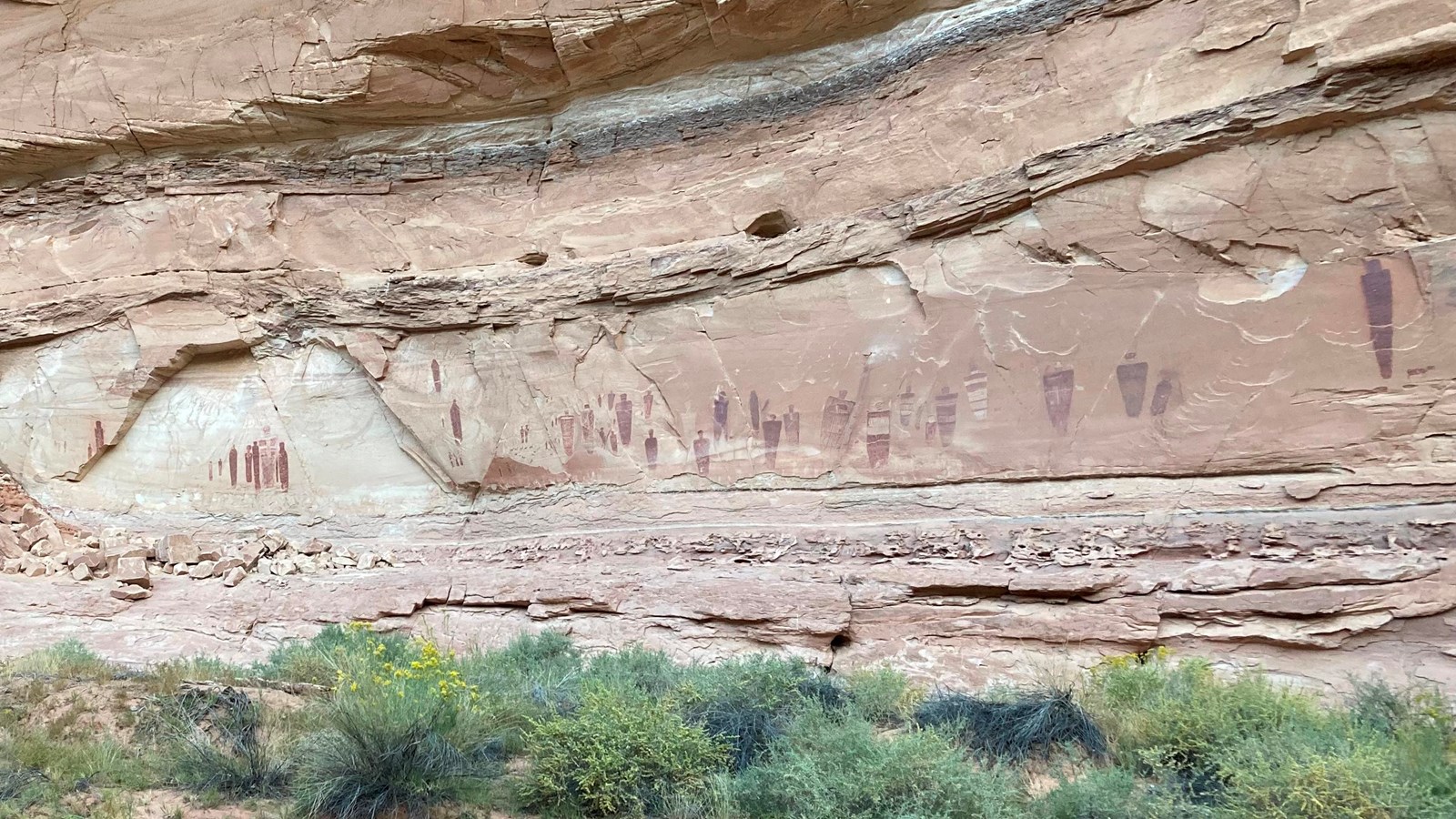Last updated: October 17, 2023
Place
Horseshoe Canyon

Horseshoe Canyon contains some of the most significant ancient rock markings in North America. The Great Gallery, the best known pictograph panel in Horseshoe Canyon, includes well-preserved, life-sized figures with intricate designs. Other impressive sights include spring wildflowers, sheer sandstone walls, and mature cottonwood groves along the intermittent stream in the canyon bottom. Horseshoe Canyon was added to Canyonlands National Park in 1971.
The archeology of Horseshoe Canyon spans thousands of years of human history. Artifacts recovered from sites in this area date back as early as 9000-7000 BCE (Before Common Era), when Paleoindians hunted large mammals like mastodons and mammoths across the southwest.
American Indian rock markings found in Horseshoe Canyon are most commonly painted in a style known as “Barrier Canyon.” This style is believed to date to the Late Archaic period, from 2000 BCE to 500 CE (Common Era). During this time, nomadic groups of hunter-gatherers made Horseshoe Canyon their seasonal home.
During later periods, the Fremont-era and Ancestral Puebloan cultures left their own distinctive rock markings in the canyon, but their presence was brief in comparison, and final abandonment occurred by 1300 CE.
The Great Gallery is the best known and most spectacular of the Horseshoe Canyon panels. This well preserved site includes both pictographs (painted figures) and petroglyphs (figures etched in the rock with a sharp stone). The tapered, life-size figures lack arms and legs but frequently contain intricate designs. These designs are characteristic of the Barrier Canyon style.
Though Horseshoe Canyon is most famous for its rock markings, the canyon’s history has many chapters. After centuries of indigenous peoples passed through, European Americans arrived. Outlaws like Butch Cassidy made use of Horseshoe Canyon in the late 1800s, taking refuge in the confusing network of canyons, especially those around Robbers Roost to the southwest.
In the early 1900s, ranchers built several stock trails into Horseshoe Canyon so livestock could reach water and feed in the canyon bottom. Eventually, the ranchers constructed a pumping operation to fill water tanks on the canyon rim. Many of these modifications are still visible today.
Prospectors explored the area in the mid-1900s, improving many stock trails to accommodate vehicles and drill rigs. Though they searched the rock layers for oil and other minerals, no successful wells or mines were ever established around Horseshoe Canyon.
After being added to Canyonlands National Park in 1971, grazing and mineral exploration in Horseshoe ended. Today, park visitors descend the old ranching trail and marvel at the history of this magnificent canyon.
Visiting Horseshoe Canyon requires driving on unpaved roads, which can become impassable with changing weather. Visiting the rock painting and pecking panels requires a hike of up to seven miles roundtrip.
